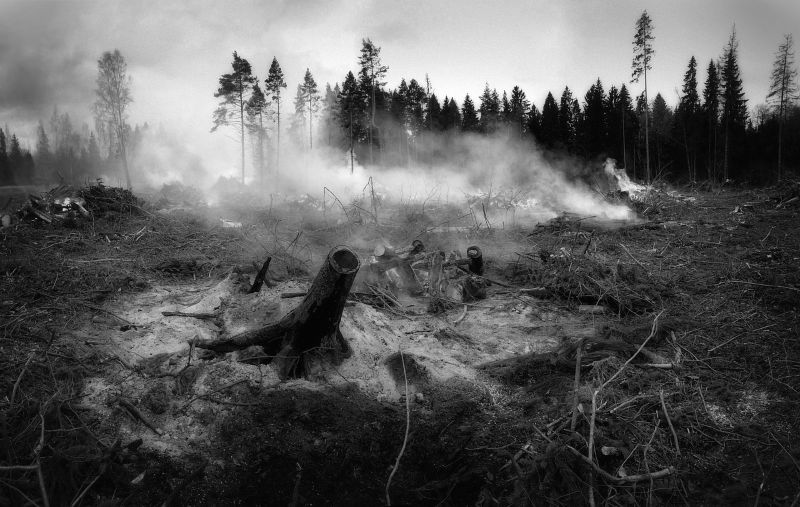After any major disaster, forensic work is an essential part of the response, helping to uncover the truth behind what happened and, ideally, preventing future catastrophes. The recent wildfires that swept through Los Angeles have left behind not just a charred landscape but a series of urgent questions. What—or who—sparked the flames? Was it an act of nature, a tragic accident, or a preventable failure?
Some experts point to extreme weather conditions, blaming the relentless drought and fierce winds for creating a tinderbox environment. Others suggest faulty power lines, reignited embers from a previous blaze, or even human negligence as the possible source. In the aftermath, utility companies, environmentalists, and investigators each present their own theories, such as the one in this video from ABC News.
This Working Forest article highlights some of the possible sources of the wildfires, and discusses some important questions:
Does determining the cause change the inevitable reality? While it’s crucial to hold responsible parties accountable, and the bigger challenge remains—how can we prepare for a future where wildfires seem to no longer be the exception, but the norm?
The Aftermath
Los Angeles has been ravaged once again by wildfires, leaving behind destruction, heartbreak, and unanswered questions. With over 7,000 homes reduced to ashes and at least 29 lives lost, the true cause of these fires is not just an investigative puzzle—it’s a question of accountability, prevention, and survival. Let’s consider some common theories on what started the LA fires.
1. Reignited Embers – An Old Fire Brought Back to Life?
Some investigators believe that a previous, smaller fire may have been the true precursor to the Palisades Fire. The idea is both haunting and scientifically possible—small pockets of embers buried under layers of dry vegetation can remain dormant for weeks. Given the right conditions, a gust of Santa Ana winds could have fanned them back to life.
- Why this is possible: These winds are notorious for creating explosive fire conditions, and rekindled fires have been documented in past California wildfires.
- Why it might not be: Fire crews closely monitor burn sites, and modern suppression techniques aim to eliminate these risks. Would they have missed an active heat pocket?
2. Southern California Edison’s Role – A Spark from the Grid?
Utility companies have been at the center of wildfire blame before—Pacific Gas & Electric (PG&E) was found responsible for the deadly Camp Fire in 2018. Now, eyes are turning to Southern California Edison (SCE), whose equipment is suspected to have played a role in the Eaton Fire.
- Why this is possible: Power lines, transformers, and electrical components have a history of igniting fires when winds knock them down or when aging infrastructure fails.
- Why it might not be: No conclusive evidence has surfaced yet, and utilities have stepped up fire prevention measures in recent years, shutting down power in high-risk areas when conditions are extreme.
3. Climate Change – The Slow, Unseen Arsonist?
California’s record-breaking drought and unrelenting heat waves created a landscape primed to burn. With moisture levels at historic lows, any spark—natural or man-made—was bound to turn into a raging inferno.
- Why this is possible: Decades of climate science have shown that rising temperatures increase fire intensity and frequency. Firefighters described the fuel conditions as a “powder keg.”
- Why it might not be enough: Climate change alone doesn’t start fires—it needs a trigger. But in a world where temperatures are rising, does the “who” even matter when the “what” is already inevitable?
4. Negligence or Arson – Human Hands at Work?
Could it have been a careless mistake? A discarded cigarette, an illegal firework, or an unsanctioned campfire? Reports surfaced about a private fireworks event near one of the fire zones. Authorities are also examining whether construction equipment could have thrown off sparks.
5. The Invisible Threat – A Fire Sparked by Homeless Encampments?
California has seen previous wildfires linked to makeshift encampments where open flames are sometimes used for warmth or cooking. Some officials are quietly investigating whether this could have been a factor.
Does Knowing the Cause Even Matter?
At the end of the day, Los Angeles burned. Families are displaced, lives are lost, and the economic toll is staggering—over $250 billion in losses. We can debate whether it was a power line, the wind, or human negligence, but does identifying the spark change the reality that wildfires are no longer an anomaly—they are a seasonal certainty?
Instead of merely searching for blame, we should be asking:
- 🔥 How do we rebuild to withstand the next fire?
- 🔥 How do we create fire-resistant communities instead of just fireproof homes?
- 🔥 How do we prepare for a future where fire is inevitable?
Like most of the world, California isn’t just facing wildfires. It’s facing a wildfire era. It is our era. Hopefully we use our experiences to better prepare for the future.
